Editor’s Note: CNN Insider Guides are thoroughly checked for accuracy. Given the fluid nature of the travel industry, however, some listings may fall out of date before guides can be updated. The best practice is to confirm current information on official websites before making plans to visit any business or attraction.
In its heyday, the Queen of the Adriatic was the world capital of publishing, banking, jewelry and trade. Venetians established the first bank at Rialto in 1157, the first casino in 1638 and the first film festival in 1932.
These days, the local population has dwindled to less than 60,000, while the number of tourists has soared to more than 20 million a year. But in best of Venice tradition, the culture and luxury markets are thriving.
In addition to art and cinema, La Biennale includes dance, theater and music, and it’s become the most important architecture festival in the world.
You’ll get lost in Venice. It’s part of the experience. Don’t worry; the best of Venice is always right in front of you.
Hotels
Luxury
Aman Canal Grande Venice
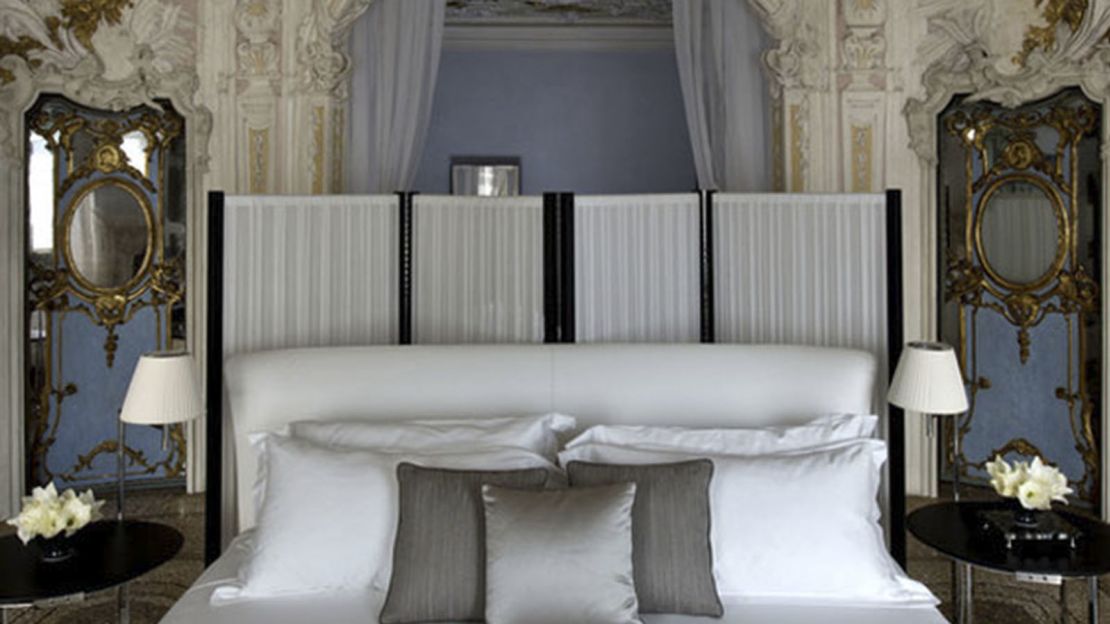
Through the centuries, Palazzo Papadopoli has hosted grand parties and welcomed visitors from around the world.
Now the Arrivabene family has found a clever solution to continue that tradition.
The 16th-century palace is still the home of Count Giberto Arrivabene Valenti Gonzaga and his wife, Bianca, who live on the top floor with their five kids.
They rent out the rest of the property to Aman Resorts, and guests are encouraged to consider it their palazzo-away-from-home.
There are only 24 rooms for guests, plus two private gardens and a rooftop terrace – making you feel like a privileged guest at a cozy, civilized house party that’s been going on for centuries.
The Gritti Palace
After a €34 million ($46 million) nip and tuck, the Gritti recently reopened in all its familiar splendor.
The spirit of Ernest Hemingway permeates the corridors of this Venetian institution, right down the hall from where Somerset Maughan once found his muse.
New themed suites have been added: the Peggy Guggeheim Suite has a Pablo Serrano sculpture and Manolo Valdes’ “Dora Marr” on the wall, along with a view of Peggy’s place, Palazzo Venier dei Leoni, across the canal; the La Fenice Heritage Suite features a centuries-old harpsichord; the Redentore Terrazza Suite, with a 250-square-meter rooftop terrace, complete with mini-pool and views across the Grand Canal, is the most impressive.
Mid-range
Hotel Al Sole
Hotel Al Sole is housed in a palazzo built at the beginning of the 1400s for one Giovanni Marcello, and is still owned by the Marcello family, whose roots here stretch back more than a millennium.
Its members include bishops and admirals, composers and commanders – Titian himself painted a portrait of Doge Nicolò Marcello.
The hotel is located close to Piazzale Roma and Campo Santa Margherita with comfortable rooms and a peaceful garden.
Novecento Boutique Hotel
The Novecento Boutique Hotel is off Campo San Maurizio, which puts it right in the center of Venice’s universe.
Furnishings and tapestries are Far East and Mediterranean originals, a reminder of the days when Venice and the Orient were big trading partners.
There are only nine rooms, all with en-suite bathrooms and exotically furnished common areas, an honesty bar, plus a small garden for breakfast when the weather is fine.
Budget
Corte 1321 Bed & Breakfast
There are only four rooms at Corte 1321 Bed & Breakfast: two quads, one triple and one double, all with en-suite bathrooms.
If you can fit yourself into one of those categories, you’ll score a great location, tasteful furnishings, private courtyard complete with ancient well, Wi-Fi and a TV – one quad comes with a kitchen.
If you’re a single, or you’re a couple who want to stay in a quad, the price is higher, depending on the season.
Close to the Rialto Bridge, it’s tricky to find, but easy to reach once you get your bearings.
Apartments
Views on Venice
If you plan to stay in Venice for three nights or more, renting an apartment allows you to live like a Venetian, particularly if you like to cook.
Filippo Gaggia is the personable Views on Venice owner who handles the most desirable properties in the city, from moderate to expensive – he even rents his family palazzo, the impressive Palazzo Loredan dell’Ambasciatore, once home to the ambassadors of the Holy Roman Empire.
Views on Venice, San Marco 4267/a; +39 041 241 1149
Dining
Ristorante Quadri (upstairs)
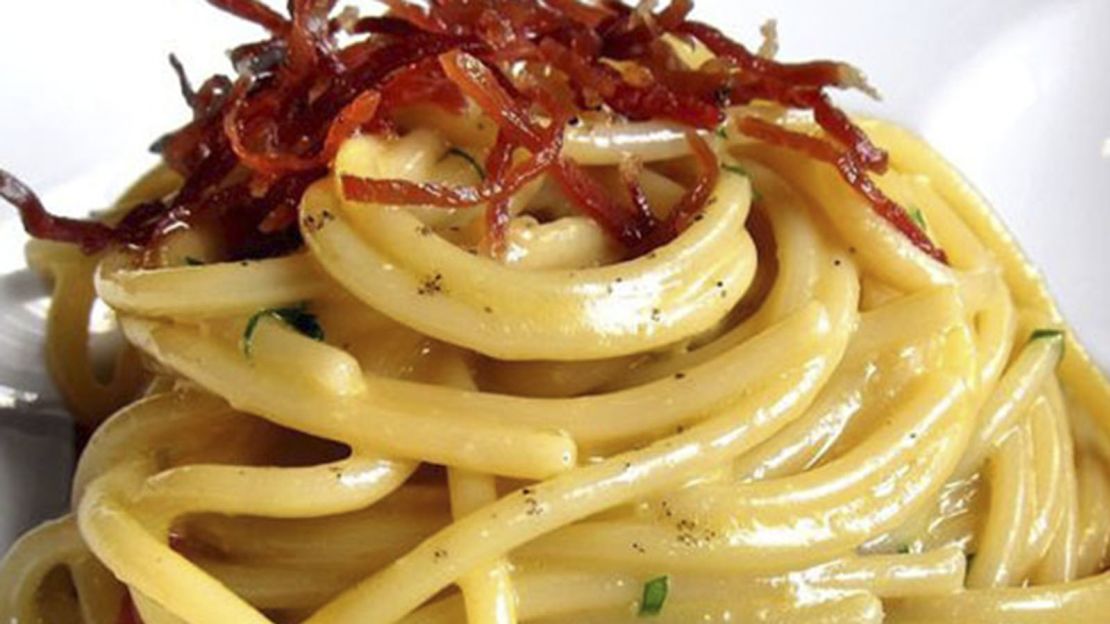
In a merger of the Titans, the Alajmo family, of the renowned Le Calandre – the three-star Michelin restaurant in nearby Padua – took over the Quadri in Piazza San Marco in 2011, transfusing fine dining with an awesome view of one of the most dramatic venues on the planet.
Max Alajmo designed the menu, zapping traditional Venetian and Italian classics into the 21st century.
The focus is on fish that arrives daily from the Rialto market.
The Laguna tasting menu includes Burrata cheese ravioli with mixed seafood, fresh tomatoes and oregano.
Grancaffé Quadri and abcQuadri (downstairs)
In 1725, Giorgio Quadri and his wife, who were from Corfu, bought the coffee house in Piazza San Marco and began serving Turkish coffee, a new delight.
Three hundred years later, the show plays on, from breakfast through nightcaps, the famed Quadri orchestra playing in the background.
Now that the Alajmo family operates the Quadri, if you step inside and stand up at the bar, you can actually get a caffé for €1.10 ($1.50) and Venetian appetizers called cicchetti for €2.00 ($2.75).
If you don’t feel like getting dressed to go upstairs for dinner, you can grab a plate of pasta at the abcQuadri, which offers Alajmo-inspired cooking in a relaxed atmosphere.
Harry’s Bar
Bartender Giuseppe Cipriani founded Harry’s Bar in 1931 after having a 10,000-lira loan repaid by a young American named Harry Pickering, who threw in an extra 30,000 lira so Cipriani could open a high-society bar.
It was an instant hit, attracting the international elite.
The next year Giuseppe’s son was born, and he named him Arrigo, which is Italian for Harry, who runs the show today.
Harry’s Bar is a Venetian rite of passage.
The Bellini – puréed white peache and prosecco – was invented here, as well as the Carpaccio, created for an ailing countess ordered by her doctor to eat raw meat.
The food is classic Venetian.
Ristorante Al Vagon
Celsa Grinzato grew up at Al Vagon, which was bought by her parents in 1951.
Her husband and kids work there; now her granddaughter is growing up there.
The fresh produce comes from San Erasmo, a local island in the lagoon; the fish comes from the Rialto market.
Celsa makes the desserts by hand; the semifreddo alla meringa – ice cream cake – is a specialty.
Located on a quiet canal, there’s plenty of outdoor seating where you can watch the gondolas go by.
Bar Rialto da Lollo
The best tramezzini and panini – sandwiches – in Venice are in this little cafe under the Sottoportici degli Oresi at the Rialto Bridge.
The codfish and artichoke tramezzino is a standout and the coffee is excellent.
The place is packed with locals at lunch.
Nightlife
Clubbing, as it’s known in the outside world, is almost nonexistent in Venice, with noise ordinances kicking in at 11 p.m., codes against live music and elderly Venetian women armed with watering cans on patrol in top-floor apartments.
However, a few best of Venice night spots have managed to wriggle their way around the rules.
There are no cars in Venice, so no worries about driving home.
Campo San Giacomo di Rialto and the Erberia
According to legend, this is the place where Venice was born on March 25, 421 A.D. at noon, and it’s still a major hub in the Venetian wheel.
Bars and eateries in and around Campo San Giacomo di Rialto – known locally as San Giacometto – and the adjoining Erberia have evolved into Venice’s main party scene.
Think of the campo as a giant, outdoor living room, connected by a bunch of different dining rooms, bars, cafes and kitchens.
Some places have live music; some have DJs, some just have a good sound system.
You can segue from spritz hour to dinner to after-dinner drinks to rowdy rocking to weeping in your best friend’s arms without ever having to leave the zone.
Campo San Giacomo di Rialto and environs, from morning to late night
Tourists have taken up the habit, ignoring protocol and drinking spritzes at all sorts of hours.
Spritz
It’s a Venetian tradition to have a spritz with friends after work and before dinner, and bars all over town serve them up with gusto.
The spritz was introduced in Venice when the city was under Austrian occupation in the early 1900s, and is a mixture of white wine or prosecco, seltzer and either Aperol, Campari (more bitter) or Select (sweeter), adorned with an olive and an orange slice and usually served on ice.
Spritzes are often accompanied by a snack, from potato chips to cichetti (Venetian appetizers).
Spritz are served at most bars in Venice; starting at about €2 ($2.70)
There are some terrific singers in Venice – sometimes you’ll find them at Remer.
Taverna al Remer
Remer is one of the few establishments in Venice (outside of hotels) that knows what happy hour and cocktails are.
The place feels like a tavern, with clunky wooden tables, but with a touch of class – discreet antiques are scattered throughout.
There’s a piano, and that means there’s music, and musicians dropping by.
If you want dinner conversation, it’s best to sit in the other room.
Outside there’s a small square on the Grand Canal, and a little dock with a great view of the Rialto Bridge, where you can wander with your best-of-Venice drinks.
At lunch (noon-3 p.m.) there’s a substantial all-you-can eat-buffet with local produce, including wine, water and cofee for €20 ($27).
At Happy Hour (5:30-7:30 p.m.) there’s an all-you-can-eat snack table with cocktail included for €8 ($10.75).
Dinner starts at 8 p.m., with local Venetian classics, mainly fish.
The music starts cranking at 9 p.m. and has been known to last until 1 a.m. and beyond, depending on the crowd.
Shopping and Attractions
It’s been compared to Disneyland, but it’s actually the Magic Kingdom, where jobs such as maskmaker, glass blower, gondolier and fish monger still exist, and counts and countesses still live in palazzi.
The best of Venice starts here.
Vaporetto dell’Arte
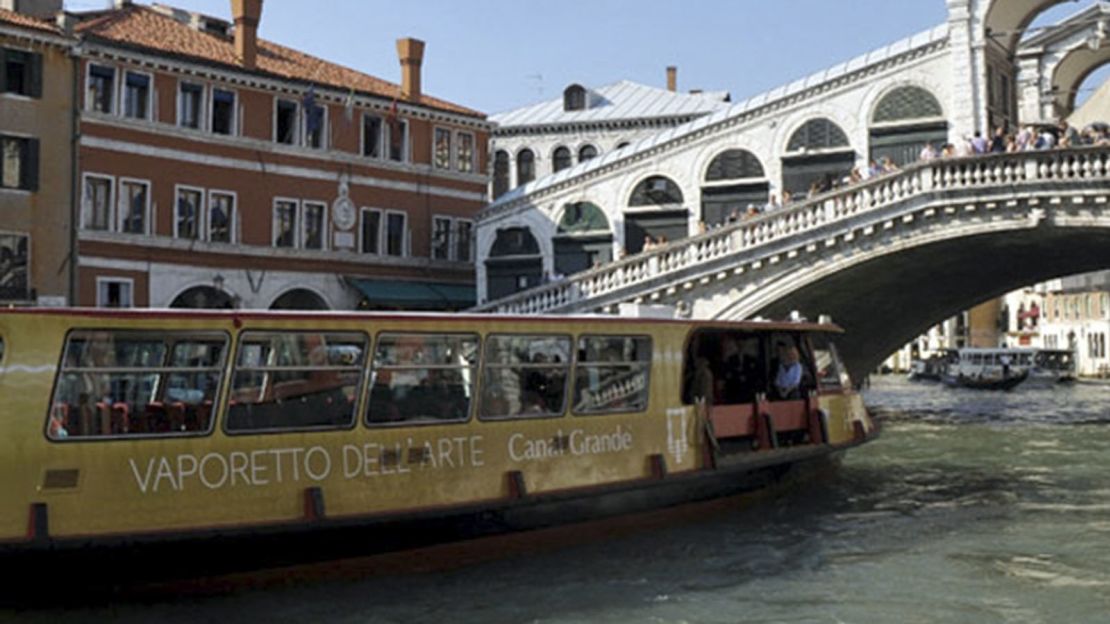
If you buy a normal time-limited vaporetto (water bus) ticket from 12 hours to a week, and pay €10 more at the time you purchase your ticket, you can ride on the Art Vaporetto for as long as your ticket lasts.
This is something everyone should do.
Instead of being stuck on a crowded boat, you can ride on a comfy vaporetto with Wi-Fi, put in your earplugs and listen to a guided tour of the Grand Canal as you travel down one of the most spectacular water ways on the planet.
The Vaporetto dell’Arte runs from 10 a.m. to 7 p.m. every 30 minutes, seven days a week, and makes only 10 stops.
It highlights the art and culture to be found at each stop, provides a map, and encourages visitors to hop on and off.
Louis Vuitton Venezia
A “Maison” offers an exclusive range of services that aren’t available in usual Louis Vuitton stores, such as a nifty VIP shopping salon that disappears behind a wall and Made to Measure shoes.
Maisons are also larger and are housed in distinct buildings – in this case, the former Cinema San Marco designed in 1936 by architect Brenno del Giudice, a manifesto for contemporary architecture in its time.
On the top floor, the store features a cool exhibition space.
Vuitton has partnered with the Fondazione Musei Civici a Venezia, Venice’s Civic Museums, to sponsor the restoration of classic artworks, which are loaned to this new space.
Then, a contemporary artist is invited to exhibit, inspired by the classic work.
The newly-opened store’s opening exhibit is entitled “Where should Othello go?” and features the restored painting “The Death of Othello” (1879) by Pompeo Molmenti, together with the contemporary video art “Strawberry-Ecstasy-Green” (2013) by New York-based artist Tony Oursler, and runs through November 24, 2013.
Louis Vuitton Venezia, San Marco 1345; +39 041 522 4500
La Bottega dei Mascareri
Maskmaking in Venice can be documented to the 13th century, when masks were used for a variety of reasons – in government, on stage, as a form of dress and as a means of disguise.
During Carnival, social and class distinctions were flipped on their heads, with servants dressing up as masters and vice versa.
These days there seems to be a mask shop on every corner, but only a handful are the real deal – most are Chinese imitations.
Sergio Boldrin and his brother, Massimo, have been a major force in keeping this art form alive.
La Bottega’s creations are completely handmade the traditional way, from papier mâché, and were featured in the film, “Eyes Wide Shut.”
Gems of Venice
Venetian Marco Polo was one of the most famous travelers on the ancient Silk Road, together with his father and uncle.
After traveling through the Far East for more than two decades, they returned in rags to Venice in 1295.
No one believed they were the Polos, nor any of the amazing tales they had to tell, so they arranged a banquet, ripped open the linings of their ragged coats, and out tumbled a fortune in gems.
Centuries later, Gems of Venice continues that tradition, although these days the gems arrive by FedEx.
For more than 30 years, Angela Cook, the British-born founder of the boutique, has traveled to exotic locales on her own quest for treasures to offer her clientele.
In her workshop close to the Rialto Bridge, local artisans assemble the jewels into unique, wearable works of art.
Ottica Vascellari
Optician Robert Vascellari became so frustrated with the quality of designer glasses that he decided to create his own line, together with his relatives in the Dolomites.
The family had been in the optic business for generations, originating in the 1930s with Roberto’s grandfather, up in Calalzo di Cadore.
The Vascellari fabbrica is in a rural, Alpine area, surrounded by mountains and nature, which is the inspiration for their eyeglasses.
The materials they use are derived from cotton.
Bees wax and wood are used in the last steps of production, so the eyeglasses you wear on your face are composed of natural materials.
Even though Vascellari eyeglasses are handmade, they actually cost less than the average designer glasses, priced around €100.
Ottica Vascellari, Ruga Rialto 1030, Sestiere San Polo; +39 041 522 9388
Càrte Venezia
Rosanna Corrà creates marbled paper and then, with cardboard, turns that paper into usable or wearable works of art.
Diaries and agendas. Paper jewelry: earrings, necklaces, bracelets, rings, brooches and belts. Purses. Bowls. Furniture. And lots more.
Even Corrà doesn’t know what she’s going to paper-ize next.
Trained in antique book restoration and binding, Corrà is continually experimenting with paper as a medium.
Simone Cenedese - Vetro di Murano
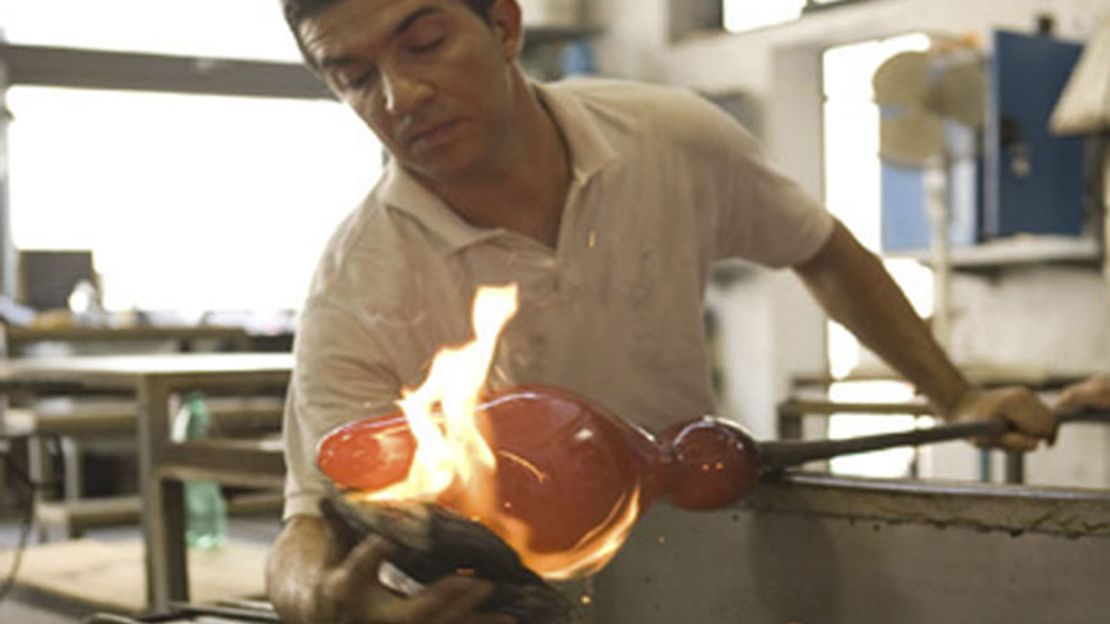
Murano has always been a secretive island, only a five-minute vaporetto ride from the center of Venice, yet mysterious enough even to Venetians.
Glassmaking traditions pass from father to son. Competition and copying are rampant.
Feuds rage between different branches of the same family.
The industry is of such importance that, in the past, a traitorous glassblower who revealed his secrets would be punished by exile or even death.
Simone Cenedese was born into a glass-blowing family.
As one of the youngest maestros on the island, he has earned international respect.
Cenedese specializes in contemporary lighting and sculptures, and has one of the more outstanding showrooms on Murano.
Acqua Alta Bookshop
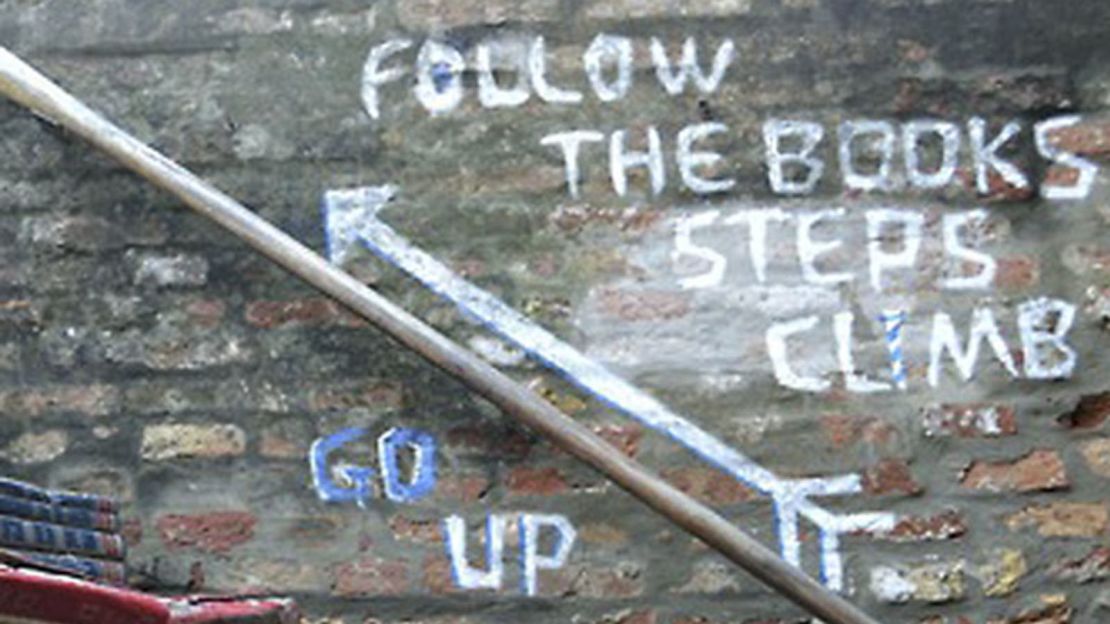
There’s a gondola piled high with books inside Acqua Alta Bookshop, the self-proclaimed “Most Beautiful Bookshop in the World.”
There are books in the bathtubs.
Books on the walls.
Out back along the patio is a staircase made of encyclopedias that leads to a view of a quiet canal.
There are thousands and thousands of books inside Libreria Acqua Alta, some new, most used; most are in Italian, but they also come in a smattering of languages.
Acqua Alta means “high water,” a tide that’s been invading Venice with ever-increasing frequency, flooding the streets and shops.
The gondola inside the shop is like a Noah’s ark for books, as are the bathtubs.
There are also postcards, posters, a small English-language section near the side door, an erotic section complete with Casanova condoms and plenty of cats.
Only in Venice
Gondola
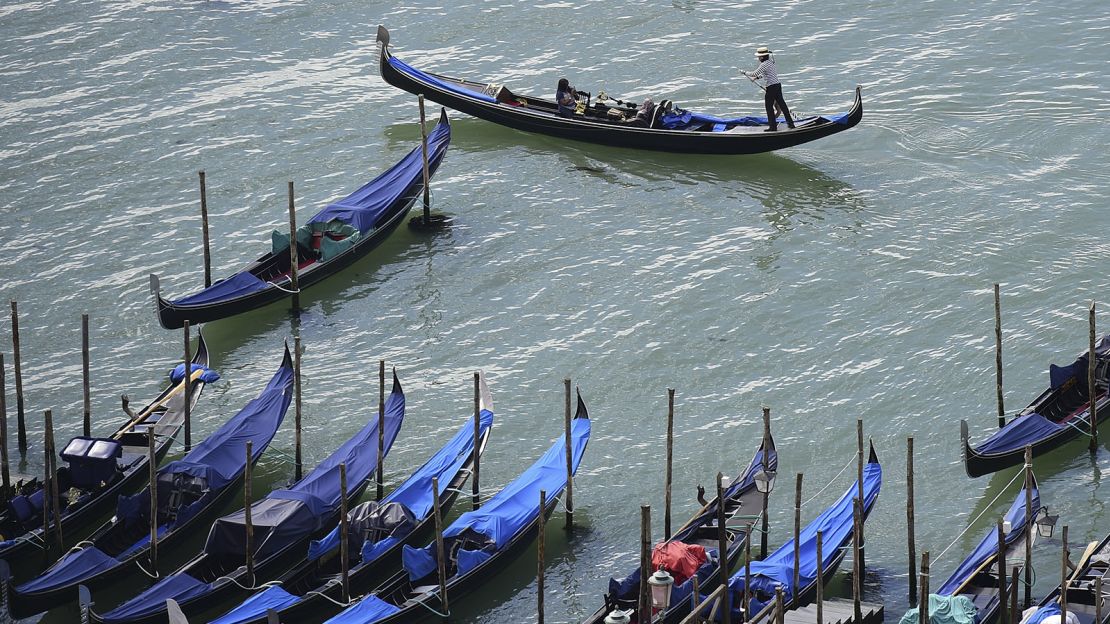
The elegant, black gondola is Venice’s most well-known symbol.
Designed to maneuver the waters of the canals and the lagoon, a gondola is an ancient method of transportation, hand-crafted to the smallest detail.
These days, a gondola ride is mandatory for many tourists, but pricey.
Is it worth it? Yes.
There’s a Venice that’s only visible at water level, and there’s only one Venice.
It’s a trip into another dimension.
Sunset is a good time to go.
Gondolas, located throughout Venice
The Rialto Markets
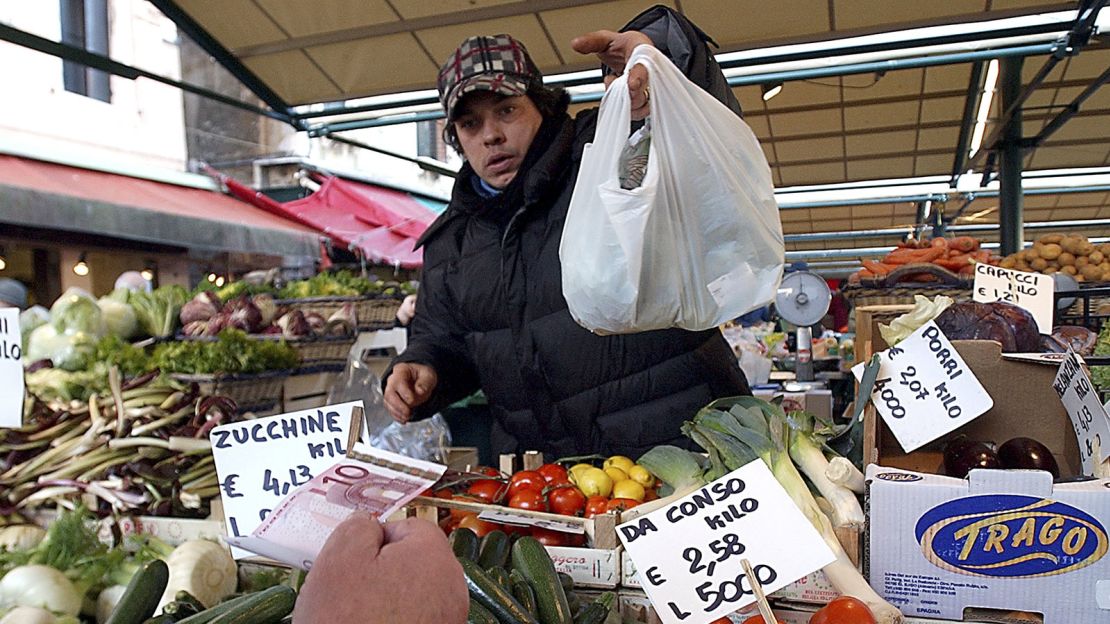
Fish Market
Venice’s fish market has been around since the year 1097, and is one area where you’ll find many locals actually doing their shopping, especially on Saturday morning.
Located near the Rialto Bridge on the San Polo side, the fish market is now in the Pescaria, a “modern” covered pavilion built in 1907.
Stalls of unrecognizable squiggly creatures are arranged on crushed ice, as well as more familiar seafood such as shrimp, squid, tuna and salmon, all with prices and place of origin clearly labeled.
If a fisherman gets lucky, there’s sometimes a dismayed swordfish on display.
The Fish Market, Pescaria at Rialto
The Fruit & Vegetable Market
Right next to the Rialto Fish Market is the Fruit & Vegetable Market, with its ever-changing produce.
Fresh vegetables and fruit from the local islands of San Erasmo and Vignole are on offer, as well as imports from the Mediterranean and beyond.
Castraure (tiny “castrated” artichokes grown only on local islands in spring) are a seasonal favorite.
Most stalls close around 1 p.m., but some stay open until evening.
The Fruit & Vegetable Market, Campo de la Pescaria

















